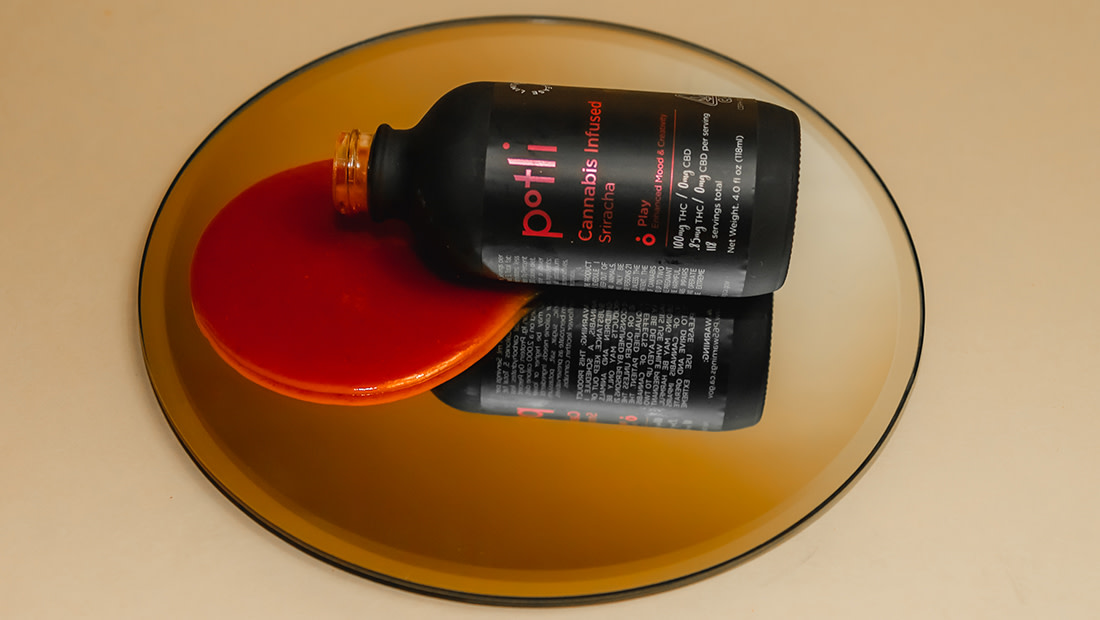Lunar New Year Recipes with Potli

Dumplings are synonymous with abundance, so this recipe makes more than enough for you to enjoy and share with others. Dumplings are traditionally eaten at midnight for Chinese Families to welcome the Lunar New Year.
The legend of dumplings varies from the the ancient myths that they look like ears that need to be protected from winter frost bite, to the fantasy of the shape looking like the crescent moon of the Spring Festival (the fifteen days after the new year), to more superstitious beliefs supporting that dumplings look like coin purses filled with gold. Some customs call for a a gold coin to be cooked into one of the dumplings and whoever gets that one will be blessed with luck for the year. Feel free to explore your creativity when making dumplings, each family has a different style of filling and shaping the dough.
For Taishanese (the dialect my family speaks) dumplings sound like “coming together” and are round with the pinching coming together at the top, all of this represents a family gathering and coming together. My recipe includes a lite salting of the cabbage and a bit of vinegar in with the wood ear mushrooms, as pickled dumplings are commonly eaten in Gaungdong, the provenance where my ancestral village is located.
Dumpling Recipe
Makes: 2 dozen dumplings
Serving: 6 dumplings
Serves: 4
Ingredients
For Dumpling Wrappers:
(If you are feeling crafty give it a try, if not please buy a package of pre-made dumplings)
-
1 3/4 cup All Purpose Flour
-
1 cup tepid water
For Filling:
-
1 1/2 cup Napa cabbage (shredded)
-
1 tablespoon vegetable oil (like avocado or
-
2 teaspoon ginger (grated or minced)
-
1 cup shitake mushrooms (chopped)
-
1/2 cup scallions or spring onions (finely sliced)
-
1/8 cup wood ear mushroom (soaked in water and vinegar, then chopped) - optional
-
1 cup baked tofu (broken into small pieces)
-
1/4 teaspoon white pepper
-
1 teaspoon sesame oil
-
1 tablespoon rice wine or dry sherry
-
1 tablespoon soy sauce
-
Salt (to taste)
For Dipping sauce (for 1 serving):
Sriracha-Orange
-
4 droppers or 2 teaspoons of Potli Cannabis Infused Sriracha
-
2 teaspoons fresh mandarin orange juice (or other citrus)
-
2 teaspoons maple syrup
-
Garnish with cilantro
Chili-Ginger
-
1/4 oz or 2 teaspoons Potli Cannabis Infused Chili Oil
-
2 teaspoons soy sauce
-
2 teaspoons lime juice
-
1/2 teaspoon finely sliced ginger
Instructions
-
Start by making the dough for the dumplings. Place flour into a medium size bowl. Slowly add water while stirring the mixture with chopsticks. Once all the water is added and the texture of the dough is flakey, use hands to knead the dough for a few minutes. Make a ball and leave in a bowl covered with a damp towel.
-
Place shredded cabbage into a bowl and add a few pinches of salt, massage the salt into the cabbage until the cabbage wilts slightly releasing the water. Place cabbage in a sieve to drain for ten minutes while preparing other ingredients, then squeeze out excess water.
-
Add oil to a wok on medium-high heat add, ginger, and let simmer, add mushrooms, let simmer. Mix tofu, scallions, wood ear mushrooms and remaining ingredients in a bowl, then add cooked mushrooms and ginger. Mix thoroughly so all the flavors meld together. Salt to taste.
-
To make the wrappers, divide ball in two, then roll each half into a log shape, use a knife to cut each half into 12 even pieces (24 total). Roll each piece into a small ball. One at a time, flatten each ball with a pin to make disks.
-
Place a small amount of filling in the center of the wrapper and fold in half, if it doesn’t stick use a little water as a glue. If you feel creative, try making different pleats of folds in the dough. I made many that were not picture worthy but tasted great. For a better tutorial on how to fold dumplings, check out https://thewoksoflife.com/how-to-fold-a-chinese-dumpling/
-
To pan fry one serving of dumplings, put 1 tablespoon of oil in a non-stick frying pan on medium-high heat. Coat the bottom of each dumpling with hot oil (this will insure even browning), then place all pre-oiled dumplings into the hot pan. Move the dumplings in the pan so they don’t stick. Once the bottom is nicely golden (about 2 minutes), add hot water and cover to steam. Keep covered while you make the sauces.
-
Enjoy!
Many cultures have adapted some type of noodle dish to their menus. In China, noodles date back 2000 years and are made to honor longevity, so it’s auspicious to add this dish at the end of meal for a birthday, wedding or any celebration.
Noodles vary from region to region and dishes are influenced by what ingredients are locally and seasonally available. In China, noodles can be thick and hand-pulled and added to soup or thin glass noodles made from mung beans for Jai or Monk’s dish, or flat and broad and steamed from rice flour like Fun common to dim sum. This recipe is in honor of Chow Mein a popular “Americanized” dish from Canton that typically uses egg noodles. So, in true multicultural mash-up fashion, feel free to make your version special to you. That could mean using any type of noodles that are familiar to your diet such as spaghetti or ramen (I used organic brown rice and millet ramen from Lotus Foods).
Next, you may want to go to the farmers market and see what mushrooms are available locally, but you can use any type that’s easy for you to get. Lastly, you can use fresh spring onions that are in season now, or use scallions or shallots, if you have an allium free diet, fennel bulb is a good substitute, but will need to be cooked in the wok first. The sauce can also vary depending on what is available to you. Feel free to be creative here or honor your culture. Maybe instead of mushroom sauce you add unagi sauce or instead of dark soy sauce you can add dark balsamic vinegar. I made my recipe, vegan and with gluten-free noodles. I went to the Farmers Market in Berkeley and got a variety of mushrooms like, Oyster, Mitake, Shimeiji and lion’s Mane, that could be pulled apart and kept long like the noodles. I also used seasonal spring onions with bulbs big enough to sauté and cilantro to garnish.
Longevity Noodles Recipe
Serves: 3
Ingredients:
-
3 quarts water (to pre-cook the noodles)
-
10 ounces dry noodles (this was 4 servings of ramen)
-
1/4 teaspoon agave syrup (or 1/8 teaspoon sugar)
-
2 teaspoon dark soy sauce
-
2 teaspoon regular soy sauce
-
1 tablespoon mushroom sauce (vegetarian oyster sauce)
-
1/2 teaspoon sesame oil
-
1/2 ounce or 3 teaspoon Potli Chili Oil
-
1/8 teaspoon white pepper
-
1/2 pound variety of mushrooms (shredded by hand or sliced thin)
-
8 ounces spring onions, scallions or Chinese chives (sliced thin)
-
Sprigs of cilantro to garnish
Instructions:
-
Boil water in large pot, cook noodles as directed, but for 1 minute less, so the noodles are par-cooked or “al dente.” Strain and rinse with cold water. Set aside.
-
Make the sauce by mixing agave, both soy sauces, mushroom sauce, sesame and chili oils, and white pepper.
-
Heat a wok or frying pan on medium-high, drizzle with cooking oil. Immediately, add the mushrooms, then onions and cook for 1 minute, or until the mushrooms soak up the oil. Add the sauce, then quickly add the noodles. Mix gently as to not break up the noodles.
-
Garnish with cilantro and Enjoy!
Notes: There are varying methods of cooking. If you like chow mein or pan fried noodles, you may want to boil the noodles for less time, then pan fry the noodles, add the sauce, then add the cooked mushrooms and onions. Also, the onions I used were much thicker than typical scallions, so I cooked them first. But, If you like the taste of fresh green onions, feel free to add some to the garnish. As always salt to taste.


 First, create your Sava account.
First, create your Sava account. Your $40 discount will apply automatically on your first order.
Your $40 discount will apply automatically on your first order.